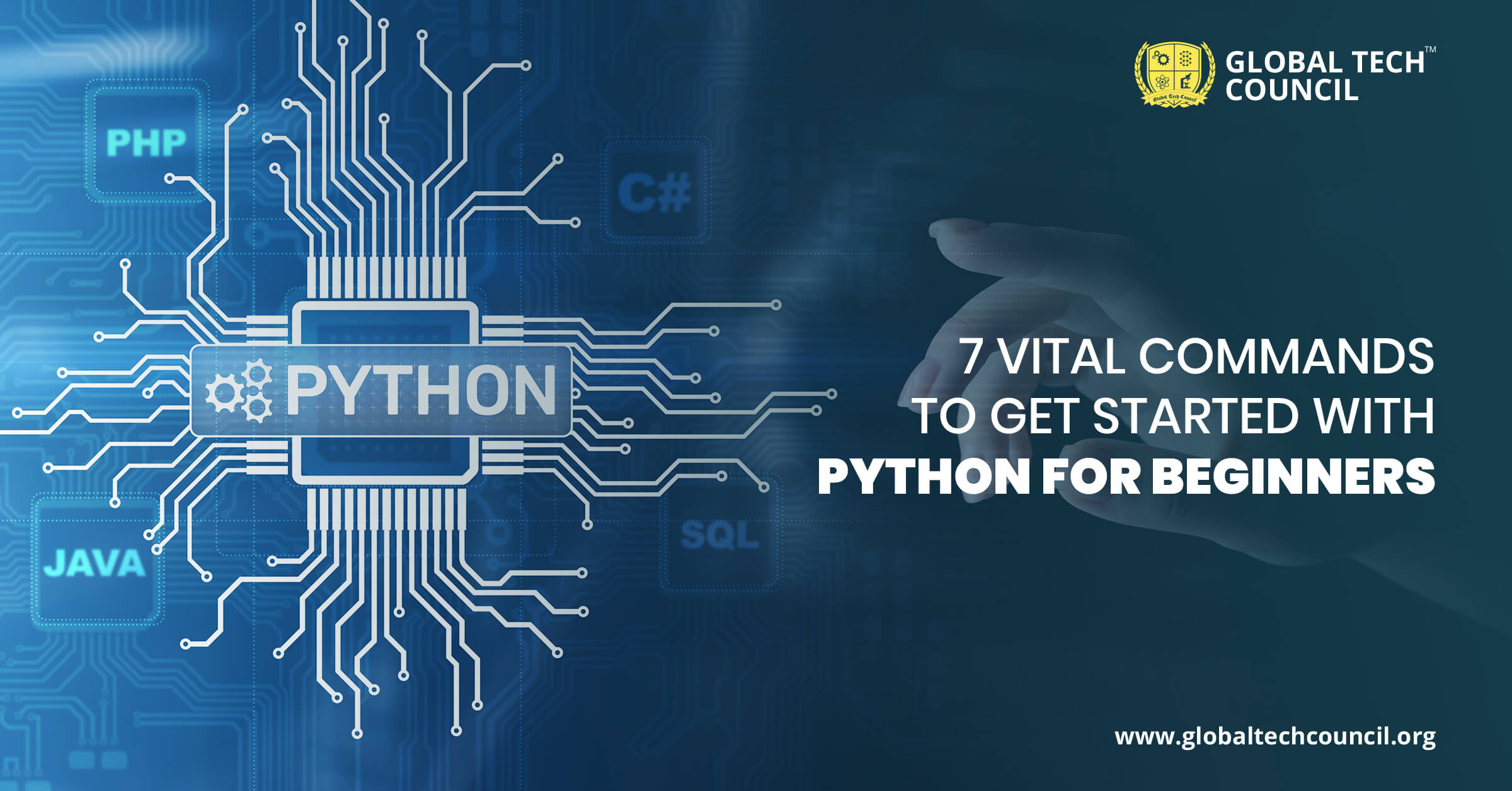
Learning any programming language becomes easier when you have an extensive road map regarding which concepts you should know as a beginner. Also, it helps to set future learning goals. Even though if you are an intermediate programmer, consistently brushing up your basic skills will only make your foundation stronger. And for beginners, there is multiple Python certification training to embark on their journey in the programming world.
With such certifications and constant practice, you will find yourself writing applicable Python programming codes. However, for writing robust programming codes, one needs to know essential command lines.
In this article, we will explore the 7 essential command lines that every beginner should know.
Variables for initialization and declaration
Usually, programming languages utilize variables for storing data. These variables are objects of specific data structures that can carry out multiple operations for data and withhold values. As a beginner, you must know the below-given command lines for the initialization of bracket enclosed data types.
Integer (number = 20)
String (name = “Alexander”)
Float (decimal = 20.32)
List (fruits = [“Cherry”, “Apple”, “Mango”])
Tuple (fruits = (“Cherry”, “Apple”, “Mango”))
Dictionary (fruitmap = {1:”Cherry”, 2:”Apple”, 3:”Mango”})
You might learn it better with a Python programming certification.
Output display with the print () method
Usually, new programmers tend to start with a basic Hello World program that delivers outputs on the string when they execute it. However, by utilizing the print method in the Python programming language, you can print variable values and hardcoded messages.
For printing a string in Python language following is the command syntax you need to follow:
print(“It is a string”)
Any sentence using close inside the quotes will show up precisely the same. Furthermore, for printing a variable value, you can specify the name of the variable without including quotes.
Provide input using input () method
A suitable program is one that allows users to interact with it. Hence to make your programming applications interactive and dynamic, you have to rely on the choice and input of users.
Implementing language logic by using if, else and elif
Your computer tends to manage the processes and make decisions on the basis of logic.
However, to embed logic within your python code, you need to utilize command lines of if, else, and elif.
Further, these commands can shift the flow of the program on the basis of given conditions. Hence these command lines are also called conditional control statements.
As you can understand from its name itself, the if command line analyses an expression, and if it is accurate, the command line conducts the statements under it.
However, if the b expression is not correct, then the elif command comes into action. Hence the input will go through another set of statements under the elif command.
At the end of the expression is not true to you both elif and if, then the expression will follow the evaluation statements under else command.
However, programmers can embed numerous if and else statements in a specific block of code. Additionally, you can also use nested if statements.
Implementation of for loop in Python programming language
Even though Python programming language supports numerous other loop statements, including while do..while, switch, the for loop is one of the widely used loop control statements in comparison to others.
Unlike C++ and C programming languages, Python’s for loop command line tends to iterate over a variable that is iterative. Also, an iterative variable can comprise multiple values withinside it, including dictionaries, lists, and tuples.
For example, declaring a list of variables “colors” comprising the values Red, Orange, Black, White, and Blue.
Hence, iterating over every element and printing the values with the help of for loop:
for element in colors:
print(element)
for i in range(0,6):
print(i)
Output:
0
1
2
3
4
5
Keep in mind that a good code is one that users can read, debug, scale quickly and effortlessly. However, users can achieve it only by composing modular code. Take a Python crash course to get better insights on this.
Defining Functions using def
To reduce redundancy and increase the reusability of code, Python offers techniques to wrap reusable coding withinside the functions which users can use when in need. Further, you can build a function with the help of the def keyword. However, to know more, you can always opt for any of the best Python certification available on the web.
Here’s how you can use the def command line:
def sum(c,d):
return c+d
print(sum(11,12))
Output:
23
Creating classes using the class keyword
In Python, users can formulate classes to build blueprints for objects. Also, you get the support for creating classes, initializing objects, and object-based programming. A class comprises functions along with return types, variables with access modifiers, and nested classes.
Here’s an example of simple coding that creates a class with the name employee:
class employee:
name = “”
def setName(self, salaryValue):
self.name = salaryValue
def displayName(self):
print(self.name)
For using a class, command-line users need to build an instance of it which is also called an object.
myemployee = employee()
myemployee.setName(“Alexander matty”)
myemployee.displayName()
Once you blend the given two code snippets, the output will be following:
Alexander matty
Conclusion
Programmers are fond of Python not because it allows them to write text-based applications but because the users can develop web applications, network programming, web scraping, ML, automation, and many more. Hence, find the best certification for the Python programming language and pave your career path. Also, you can opt for the Python global certification to gain a high level of specialization and expertise in the field. Check out the GLOBAL TECH COUNCIL for more content like this.